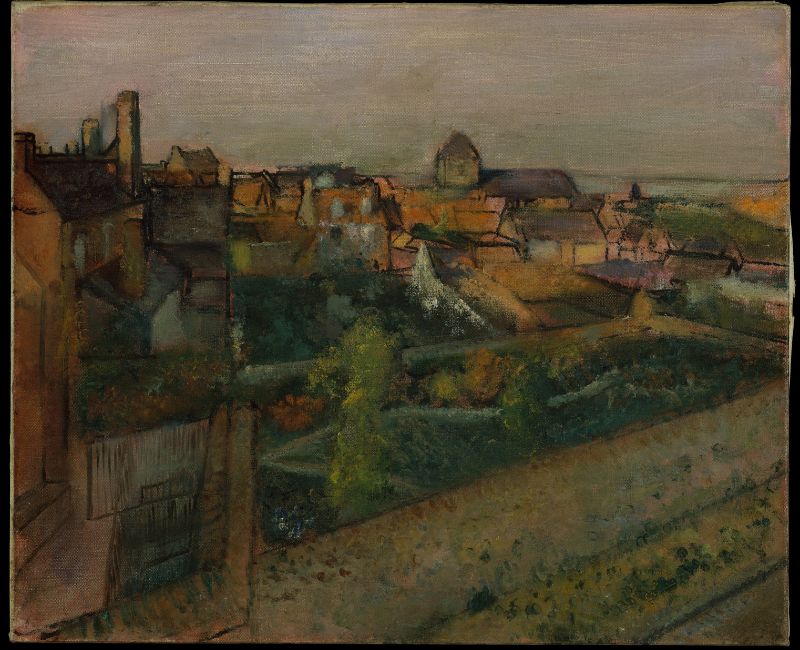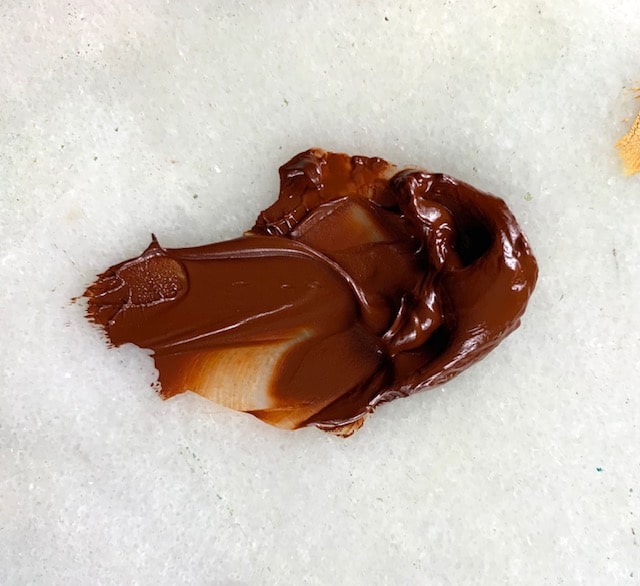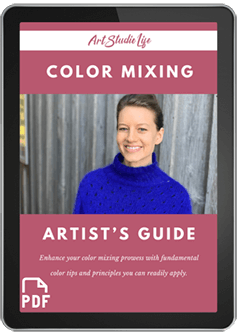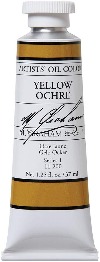At face value, earth tone colors might not seem like the most exciting… However, this could not be farther from the truth! If you just look at some of the old master painters, you can see what is possible with earth tones colors.

Earth tones come in a wide variety of colors and hues. And the great news is that you can easily mix your own earth tones for your paintings! All you need is a basic understanding of color theory and a few painting supplies.
But first off, a quick explanation of what earth tone colors are…
What are earth tone colors?
Earth tone colors in its narrowest definition means, colors that contain some brown. However, more broadly it can be defined as ‘natural colors’ (colors found in nature) such as olive green, terra cotta red, and wheat grass yellow.

There are an infinite number of earth tone colours, but they all share some common characteristics. Earth tones are typically muted, natural-looking colors found in nature. They can be warm or cool, light or dark, but they always have a calming, grounding effect.
Do you need to mix your own earth tones?
No, you do not ‘need’ to mix your own earth tones as they can be readily purchased. In fact, they tend to be cheapest of all the colors.

However, some of the earth tone colors are not necessary to always have on your palette (though I do suggest you keep at least one earth tone on your palette). In this article you will find mixing instructions for when you need additional earth tone colors. Or when you want to create a quick mixture that you can use to mix with other colors with it on your palette.
How to mix earth tone colors

For the purpose of this article we will be focusing specifically on how to mix earth tone colors that you will often find available for purchase. In particular, Yellow Ochre, Burnt Sienna, Burnt Umber and also Olive Green.
But you can mix a whole range of different shades of colors − such as earthy greens, browns, reds and more… utilizing the earth tone hues (as well as others) we are focused on creating below.
Let’s dive into exactly how to mix these earth tone colours!
Mixing Yellow Ochre

Yellow ochre is an ancient color and one of the most reliable pigments. Many artists have it permanently on their palette. However, it is not absolutely necessary to have – I know many artists who paint without it.
Steps to mix your own yellow ochre color:
- Start with a base yellow – you can use cadmium yellow or any other
- Mix in purple (the complementary color to yellow)
- If your yellow starts to look a little green then add some red
- If your mixed yellow ochre is looking too orange then add blue
- Make any necessary adjustments
If you haven’t already – Grab my FREE Color Mixing Guide for help with Mixing Colors!
How to mix Burnt Sienna
Burnt Sienna can be a particularly useful color, but not one that is needed all the time. So, to avoid having to keep it on your palette all the time – you can just mix it yourself.

Steps to mix your own burnt sienna color:
- Mix Ultramarine Blue with orange.
- You can also mix all primary colors together – blue + yellow + red, but maintaining a dominance towards the warmer colors of red and yellow.
- Mix together orange and black – this is my least favorite method as I believe it results in a less rich color. However, you can still try it out.
Mixing Burnt Umber

Burnt Umber can also be very useful (is somewhat darker than Burnt Sienna). Both are warm browns and muted darkened orange colors.
Steps to mix your own burnt umber color:
- If you wish to darken your burnt sienna color and create a burnt umber then add some black or more Ultramarine Blue.
You can find more information and instructions for how to mix different browns, here.
Mixing your own Olive Green
In order to create an olive earth tone green you can simply mix yourself a muted green.
Steps to mix your own olive green color:
- Mix together yellow + blue to create a green for yourself
- Mix in a small amount of red (cadmium red or another form of red will do) to your green in order to mute the green color. Red is the complementary color of green – so this is why it is perfect for muting your green.
- If you wish to mute your color more and make it more of an earth tone – you can add more red.
- If it is too red/ orange then you can mix in some blue.
- Make adjustments as you see necessary.
Start mixing your own earth tones

The absolute best way to learn how to mix is to simply do it. If you are not satisfied with the way a certain earth tone color looks – then, make adjustments and experiment with mixing in different colors until satisfied. As always, the doing is what creates understanding. So, more than anything, just continuing to mix on your own will help you to learn and understand how color works.
Earth tone colors you can purchase
Again, there are many earth tone colors readily available for purchase that are incredibly useful. Now that you know how to mix your own – you’ll be able to play with when you want to use ones from a tube vs mixing your own.









24 thoughts on “What Earth Tone Colors Are & How to Easily Mix Your Own Earth Tones”
Hi Everyone
Nice to read so many people older into watercolours. I discovered watercolours after getting I’ll and suffering chronic pain. I love watercolours I been using it for my fairy’s for years but only now in last couple years I discovered landscape and floral also atmospheric paintings it’s beautiful each painting I learn so much more there are no mistakes you can make each painting has something new discovery it’s like a journey of art but also your soul I know sound bit nutty but I am finding beauty in everything I look at everything differently and not a religious person but I feel blessed being open up to this beauty around us that I walked often pass and didn’t see blind to the miracles of nature , animals when I paint them I want to catch there spirit of play and the soul is not just in the eyes I see it in there gesture it’s hard to explain has anyone here notice that since starting watercolours. Also yes colour plays important part in the painting it describes what you can’t put in words .
Sorry for blabbing I just wanted to hear from others that have felt same thing since picking up the paintbrush first time.
Jennifer
Hello Jennifer, Thank you for sharing! That is wonderful that you have gotten into watercolor paints and have been enjoying them so much. They really are a wonderful and beautiful medium that allows for creating many different kinds of paintings. Hope you continue to enjoy and experiment with them!
Hi Elisabeth many thanks again for all your help. This one is so useful for me; I am trying to limit my pallet until I can improve. I am attempting a train watercolour with only 3 colours; it could take me some time!!
😁
My best regardsm
Mike
Hi Mike, Am very glad that this article is helpful for you! Thank you for sharing 🙂 That is great that you are only using 3 colors right now – you learn a lot about each color and how many different kinds of mixtures you can get from just three colors alone!
Thanks for the info it is very useful as usual. I’m back painting but need some surgery on my shoulder will hace to learn to paint with my left arm for awhile.
regards Warren Petherbridge
Hi Warren, Very good to hear from you! Am glad that the information in this article was helpful and useful for you. Am sorry to hear that you need some surgery on your shoulder. I wish you a speedy recovery! That is great though that you will work on learning to paint with the left arm for a while – there are sometimes advantages to working with the left hand instead of the right.
Send you wishes for a speedy recovery and kind regards, Elisabeth
Dear Prof. Elisabetyh:
Thank you for your lessons and tips on mixing colours that I found very helpful.
During all my life I was Ph.D. in cliical medecine and after retired I obtain a graduation in History of Art . Now all my free time is occupied with paintings. So, your lessons are very important for me and this one it’s special, concerning the use of yellow ochre.
Kind regards
Helena Saldanha
Hello Helena,
You are so very welcome! I am happy that the tips and lessons are helpful – thank you for sharing that. That is wonderful that you are now spending your free time learning about painting after retiring from medicine.
Kind Regards, Elisabeth
Thank you Elizabeth, I need your help.
And your teaching is easy to follow.
It sure helps me💐
Hello Georgina, I am so glad that the information here has been helpful for you! 🙂
אליזבת יקרה
תודה רבה על צבע חום שימושי מאוד.
הגשת הדרכה מעולה לקבלת צבעי אדמה
לכל היוזמות שלך , תודה
על הרצון להעביר מידע מקצועי לציבור הרחב
נפלאה
רותי כהן
רותי היקרה, את כל כך מוזמנת! משמח אותי לשמוע שהמידע מועיל 🙂 זה העונג שלי לשתף.
אליזבת
תודה רבה על הטיפום המיוחדים
עוזרים לי מאוד
תודה
בהערכה
רותי
🙂 !אתה כל כך מוזמן רותי
Hello Elisabeth, this is a great post. I paint landscapes all the time and I think the proper use of these muted colours keep it more natural. Thanks very much for this article, it will be a great help to me, and I need all the help I can get.
Dave M.😎🇦🇺
Hello Dave,
Yes, muted colors definitely do keep a landscape painting more natural. You are very welcome – am glad to hear that it was helpful to you! 🙂
I have finally started water color painting at 80. Maybe I can be a Grandma Moses!
I found your advise on mixing colors helpful and well defined. Thanks! I will gladly revisit.
Hello! I am glad that you found the info on color mixing to be helpful:) Wonderful that you have started watercolor painting. yes! You could become the next Grandma Moses! 🙂
Its like you read my mind! You seem to know a
lot about this, like you wrote the book in it or
something. I think that you could do with some pics to drive the message home a bit, but other than that, this is magnificent blog.
An excellent read. I’ll definitely be back.
Thank! Appreciate the kind words.
Very nice post. I just stumbled upon your blog and wished to say
that I’ve really enjoyed surfing around your blog posts.
In any case I’ll be subscribing to your rss feed
and I hope you write again soon!
Thank you! Glad to hear that you enjoyed reading the articles on this blog.
Hi Elizabeth thanks for all the tips on mixing colours in oil I’ve struggled for years to mix colours since I started painting at sixty one years old and had no form of training so all the information is really helpful to me thank you again
PS I don’t have a website
Hello Claudia, Thank you for your kind note! I am happy to hear that all the information is helpful for you! I hope that the resources on this site will continue to be helpful for you on your learning journey 🙂